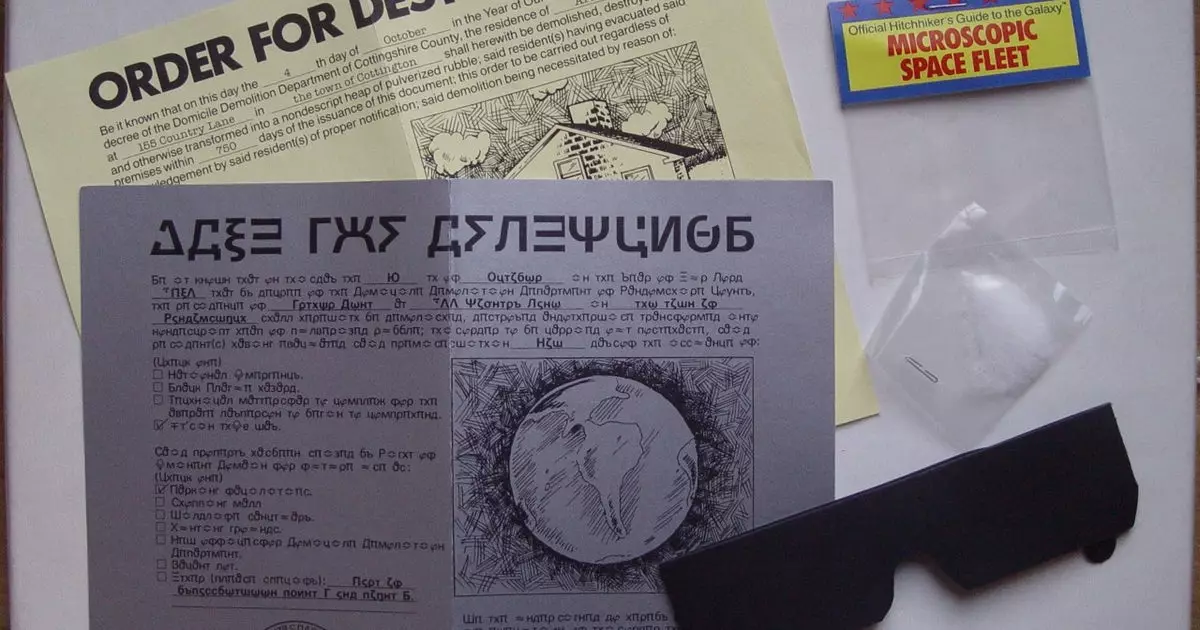In the vast ocean of video game history, certain artifacts echo stories that are often overshadowed by technological advancements and flashy graphics. Among these relics reside the “feelies” introduced by Infocom, a groundbreaking company that forever altered the gaming landscape in the 1980s. While the majority of today’s gaming experiences are enveloped in high-definition art and complex narratives, the humble feelies invoke a certain nostalgia that resonates deeply with the essence of gaming in its infancy. This article explores the power of these seemingly trivial items and the emotional connections they create, which modern games often overlook.
The Endearing Nature of Feelies
Scott Krol’s recent post about the physical contents of Infocom’s iconic 1984 title, *The Hitchhiker’s Guide to the Galaxy*, reveals just how ingenious and playful these artifacts were. Infocom’s willingness to include physical items alongside their text-based adventures was revolutionary. These feelies—booklets, maps, and even peculiar objects meant to spark the imagination—challenged conventional notions of what a game could entail. One such example is a packet that includes a label proclaiming the existence of “invisible” contents. Such whimsically absurd details are what set feelies apart, evoking intrigue and laughter simply through their existence. They encourage players to engage both with the game and their imagination, crafting experiences that transcend mere gameplay.
The Philosophical Undertones of Arthur Dent
Victoria Regan’s reflections on Arthur Dent, the reluctant hero thrust into unfathomable chaos, add further dimensions to our understanding of gaming narratives. Regan articulates an appreciation of Dent’s character as someone who embodies stoicism amid absurdity. Initially, many may recognize Dent as a hapless protagonist portrayed with comedic flair by Simon Jones in the television adaptation. Yet, Regan’s insights frame him as a symbol of inner strength, confronting a universe teeming with unpredictability. This nuanced perspective invites deeper contemplation on human resilience, much like the unique experiences that video games such as *The Hitchhiker’s Guide* offer, contrasting sharply with the linear storytelling often found in modern gaming.
The Quest for Discovery
Regan’s exploration of the motivation behind playing Infocom games reveals another crucial aspect that has gradually faded in contemporary gaming culture: the thrill of discovery. In a landscape where games are dissected and analyzed before they’re even released, players are often robbed of the delight found in unveiling hidden secrets organically. Regan recalls the relentless urge she and her brother felt to unearth what lay beyond the next door in their adventure, a sentiment starkly absent from today’s pre-packaged gaming experiences. The feeling evokes longing for an era where players, fueled by curiosity, were truly in charge of their gaming destinies. This inherent yearning for exploration and the unexpected has been significantly dulled by marketing and the pervasive need to manufacture hype around every new title.
Uselessness as a Virtue
Amid the fray of aggressive marketing that aims to maximize collectible value, the charm of Infocom’s feelies lies in their humble uselessness. They provoke a certain joy in their irrelevance to practical gaming, sparking sentimentality rather than a desire to showcase wealth or status. In a world rife with premium editions and figurines laden with marketing intent, these innocuous, delightful artifacts remind us of the genuine fun ingrained in gaming. This simplicity fosters an appreciation for creativity and playful imagination, pushing back against the sterile, profitable approach that has seeped into game merchandising today.
A Call for More Whimsical Garbage
In a gaming industry that often prioritizes mass appeal and financial gain over individuality and whim, there is an urgent need to reclaim the spirit of “beautifully useless” collectibles. The charm of the feelies is that they epitomize a celebrated quirkiness and an acceptance of the absurd. Instead of indulging the monotonous culture of profit-driven collectibles, we should embrace items that resonate with authenticity. A revival of feelies, filled with imagination and humor, is essential to rekindle the original joy of discovery and wonder in the gaming experience. As we navigate advances in technology, incorporating such playful artifacts can remind us that sometimes, the greatest value lies not in what we collect, but in the experiences that inspire us.


Leave a Reply